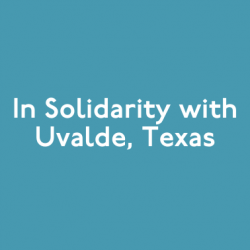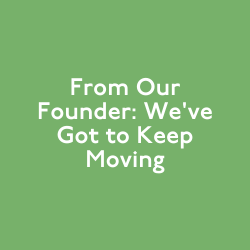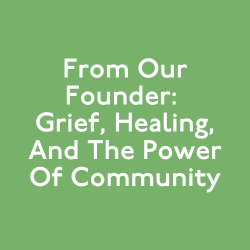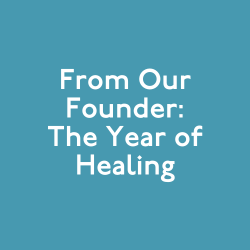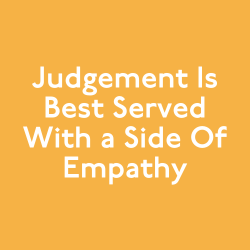Written by Founder and CEO, Sara Potler LaHayne.
When I founded Move This World in 2010, the last thing on my mind was becoming a tech company. Identifying as an artist and educator, I don’t consider myself tech savvy at all. If anything, I was on the hunt for a cure to the technological dependency that has ruined relationships, attention spans, and the ability to empathize.
Instead, we focused on direct service. We worked with students and teachers in groups, directly facilitating our social emotional learning curriculum in school buildings. We laughed and cried together, strengthening communities and building support systems along the way.
Although some of my fondest memories of Move This World come from this time period, numerous challenges repeatedly arose. It was difficult to find trainers who understood the depth of this work. We struggled to find consistency across our program. As more schools, teachers, and students requested trainings, it became difficult to manage logistics, schedules, and travel expenses for our small, yet dedicated team.
I met the challenge riding many an Amtrak train through the night to cover that extra session — not exactly the role a CEO should be playing to advance the company. Looking back, I’m grateful that I had those moments to connect with our partners and to truly live in our work. After all, I considered myself a dancer, artist, and “social impact person” first, CEO never.
Was I making the best decision for our company? Probably not. Did I always know the “right” decision? Definitely not, and I didn’t claim to. Along the way, I asked a lot of questions. I acknowledged my weaknesses, leaned on mentors and focused on learning as much as I could. It was that hunger for learning, growth and willingness to face challenges head on that drew in so many supporters, team members, mentors, funders, board members, and wellbeing “champions.” On a day to day basis did it feel like we were succeeding? No. Most of the time it felt a lot like failure. But we kept going.
One day I received an email from a teacher. He said that the session we did at the school was inspiring, everyone left feeling connected and motivated – but, they wanted (and needed) more. They wanted a way to sustain the work with their students on a daily basis. Jumping on another plane, train, or bus wasn’t an option. So we whipped out a phone and started recording a video that we could send to the teacher to use with his students. His response? Please send more.
The video was a hit. The next week, we received a video in return, this one showing the students engaged in the exercise we had sent over. It was like magic. Suddenly, we could reach 30 more people without leaving the office. We quickly realized this number could increase exponentially, and low and behold, I threw myself into yet another uncharted territory.
Coming from a person who uses their phone only for calls and emails, I never thought I’d be leading an EdTech company. Diving into a new field, making this huge pivot was a risk. We could have failed, but we went for it anyway. I’ve always believed deeply in this work. I knew that despite the early doubts about social emotional learning and teaching non-cognitive, “soft” skills, that our program was having an impact, that we were making a difference, and that the world would eventually catch up.
That belief kept my mind hunting for solutions instead of a way out. Through the mud, we found clarity. As it turns out, that recipe is often the secret to success.
For example, Dr Dre’s classic album The Chronic, which changed hip-hop culture for years to come, got its name because Dre and Snoop misheard the word “hydroponic.”
Chocolate chip cookies were a mistake. The inventor was out of bakers chocolate and hoped broken pieces of sweet chocolate would melt and form chocolate cookies. Instead, we got everyone’s favorite treat.
Did you know penicillin was also a mistake? It was only upon throwing his failed attempts in the trash that Sir Alexander Fleming found what he was looking for.
Ultimately, none of these inventions would exist if the inventors hadn’t made mistakes. They wouldn’t exist if the creators hadn’t kept pursuing their dreams without abandon, pushed the envelope, or took risks.
When we try out new ideas, some fall flat and some take wing. But those truly great ideas live in the danger zone, the area where we often fail. Those are often our boldest innovations.
Fast forward to 2018, and what started as a cell phone video has transformed our organization. Move This World is currently working across seventeen states and Washington DC. We’ve impacted nearly half a million students. We recently raised our first seed round — another opportunity to stare failure right in the face. Although I’d never raised a round of equity before, every morning I took a deep breath and went for it.
Having been through the grind once before, I was better prepared to handle the uncertainty. Each day, I acted as if the funding would come, as if the rest of the world would come around to why social emotional wellness was important. I made the extra phone call. I stayed up late to talk to my husband about strategy. I leaned heavily on my mentors and advisors.
And yes, I got stressed out again. But I stayed rooted in my routine, I stayed the course, and I looked for an opening when it seemed like doors were closing. And now, here we are, fully funded, on pace to grow 150% this year over last year, with new talent and new goals for what’s ahead.
It’s not at all where I thought I would be twelve years ago. And yet, it’s exactly where I’m supposed to be.






